From air-drying clothes to supporting non-profits, we look at 21 different ways you can lower your carbon footprint today in real, tangible ways.
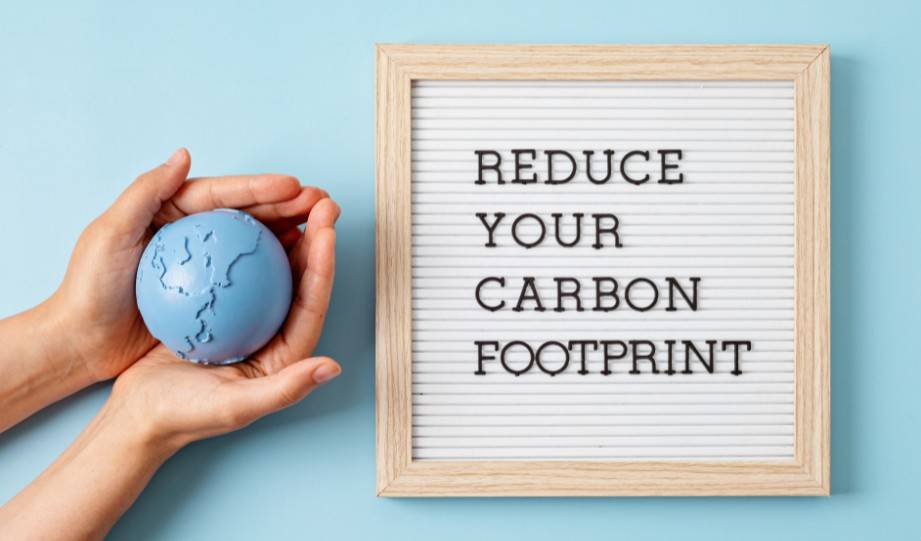
Since 1961, humanity’s carbon footprint has increased elevenfold.
From driving cars to using air conditioning and eating red meat — there are so many ways we contribute to greenhouse gas emissions in our lives. You, as a person living in the 2020s, put 11 times more carbon into the atmosphere than you would have in the 1960s.
So, what can you do to help reduce this amount in real, tangible ways?
Here we present several ways on how to reduce your carbon footprint right now in your business and personal life.
Top 21 Ways to Reduce Your Carbon Footprint
1. Reduce energy use or make your home and workplace more energy-efficient
First things first, we need to start with energy. We all use energy in our homes and workplaces, whether we’re using our washing machines or keeping the light bulbs on.
But there are many ways to reduce your overall energy usage in your home.
For example, clothes dryers are the most energy-hungry appliances in US homes, so try switching to an air-drying rack instead to reduce your energy consumption.
Old appliances like refrigerators and air conditioning units can be very energy-hungry as well, so try switching to modern ones that are more energy efficient. Energy efficient light bulbs are also worth buying.
Simple changes like this can reduce your electricity use and therefore lower your energy bill too. It’s a win-win!
2. Switch to renewable energy sources
The US currently gets 81% of its energy from fossil fuels. [1]
Burning these fossil fuels greatly contributes to climate change and is one of the major reasons for the increase in our carbon footprints. As such, you might want to consider switching over to renewable energy sources like wind power.
Personal wind power is a stretch, but you might want to consider installing solar panels for your home so you can generate your own solar power. Solar panels cost around $11,411 to $14,874 (after solar tax credits) for the average US home, and 16 panels would be enough to completely power one home.
3. Invest in green technology for your home or business
“Green technology” refers to inventions that aim to make your home/business more energy-efficient, thereby helping stop climate change.
Many people are turning their homes into “smart homes” with innovations such as programmable thermostats and “smart lights” activated by motion sensors and apps.
LEDs use less energy and cost you a lot less in the long run. There is not a huge difference in price, and they last longer so you won’t need to keep buying replacements.
Brian Horne, Senior Insights & Analytics Consultant at Energy Saving Trust
Another easy way to reduce your carbon footprint? Replace the lights in your home or workplace with LED lights.
4. Drive less and use alternative, eco-friendly modes of transport
A typical vehicle in the US emits 4.6 metric tons of carbon dioxide per year.
Yes, 4.6 TONS.
This means that one of the best things you can do to fight climate change is to avoid driving to places if you can.
However, in a country as large as the US, driving may be inevitable. But when possible, you should try walking, biking, using public transport, and carpooling to get to where you need to be instead.
5. Fly less
Around 12% of all CO2 emissions in the transportation sector come from aviation. Modern planes are more fuel efficient, but many old planes still fly to this day.
Other modes of transport like trains are more environmentally friendly, so if you’re able to take them so you can fly less, then do it.
Or if your international business meeting could be done over Zoom or Skype, then do that instead. That way, you can cut your fuel emissions even more drastically.
If you’re a C-Suite Exec who normally flies in a private jet, and flying is really the only way to get to where you’re going, you should think about taking a commuter plane instead, whether it’s business class or economy class.
If you're interested in calculating your emissions from air travel, head on over to this carbon footprint calculator from Mossy Earth.
6. Reduce water use
Excessive water use can put a strain on the environment, not to mention on your water heater. Saving water in your everyday life can be a great way to reduce your bills and your carbon footprint too.
A couple of other tips:
7. Minimize your food waste
Discarded food is usually sent to landfills, where it rots and turns into methane gas, contributing to greenhouse gases and climate change. To prevent this, try reducing your food waste in order to reduce your carbon footprint.
Try shopping for small amounts of food several times during the week instead of buying in bulk once a week so you don’t overbuy food.
Also, store fresh food correctly to stop it from going bad prematurely. In addition, if you can’t finish an entire meal, then eat the leftovers the following day.
8. Eat less meat
Livestock contribute up to 14% of all greenhouse gas emissions in the US. This is especially true of larger animals like cows and lambs.
According to Project Drawdown, if cattle were their own nation, they’d be the third-largest emitter of greenhouse gases on the planet. [2]
If going full vegetarian or vegan sounds a little scary to you, why not try going flexitarian instead? The idea is that you have a primarily vegetarian diet, but you can still occasionally eat fish or meat to treat yourself. It’s not as hard as you’d think.
9. Embrace a minimalist lifestyle
Consumerism plays an undeniable role in carbon emissions on Earth. To put it simply — the more stuff you have, the more you’re impacting the environment.
From plastic packaging to the fuel in a FedEx truck, all of your purchases use up vital resources and contribute to CO2 emissions in unseen ways.
So why not try becoming more minimalist? Instead of buying physical DVDs, rent the movies digitally. Instead of buying paper books, get a Kindle. Avoid buying clothes, furniture, and junk that you don’t really need or use.
You’ll save money, you’ll have less to clean, and you’ll help reduce your carbon footprint.
10. Recycle any old or unwanted item properly
We’re a recycling center in San Francisco, so we know a thing or two about recycling and greenhouse gases. Landfills release methane into the atmosphere over time, and US landfills are the world’s worst, contributing 129.7 million metric tons of it in 2010.
If you want to avoid items from going to landfill and reduce the amount of waste we’re producing, recycle them properly. From plastic bottles to mattresses to electronics, follow the recycling guidelines for these materials in your local area.
You can also visit recycling centers like GreenCitizen for trickier materials like VHS tapes and styrofoam.
11. Reuse and upcycle your things as much as you can
The landfill contribute a lot to greenhouse gases, especially if the items dumped into it are non-recyclable, so try to reuse or upcycle your items wherever you can. For example, there are multiple ways to upcycle an old bedsheet, from making a blanket fort for children to using it as a projector screen.
Reusing things is all about creativity. We’ve seen people plug fence holes with marbles, turn suitcases into medical cabinets, upcycle alcohol bottles into lamps, and repurpose books as shelves. The sky’s the limit!
12. Buy locally-sourced organic food from local farmers and green restaurants
When you buy food at the supermarket, it’s usually been shipped in from another part of the country or possibly overseas, greatly increasing its carbon footprint.
It’s better if you buy your food from local sources. If you buy local, the food only has a short journey to reach the store and then your plate. Ideally, you want to buy organic food that hasn’t required extensive road or air travel in order to be sold.
Even better, visit the local farmers market or green restaurant, if there is one.
13. Buy secondhand clothes (and don’t buy fast fashion)
Fashion brands used to produce 4 collections a year — 1 for each season. Now, many high-street and designer brands produce “fast fashion” where companies make multiple collections every season to keep up with consumer demand.
It is quite critical that we as consumers accept that these cheap garments are not possible if the environmental impacts are really all taken care of. In the future, we should produce less, we buy less and there will be less waste.
Kirsi Niinimäki, Associate Professor in Fashion Research, Aalto University, Finland
This practice puts a huge strain on the environment and our resources, so avoid shops that produce clothing in this way and try to buy secondhand or vintage clothes instead.
14. Shop for green, eco-friendly products
There are many green and eco-friendly products you can buy for your home — one of the best places to start is with cleaning products.
We’ve compiled a list of the best green cleaning products, from dish soaps to degreasers, to help you make the switch.
These products are from brands that are known to be be friendly to the environment, such as Mrs. Meyer's, Molly's Suds, ECOS, and Seventh Generation.
You can get more products like these in our Green Store.
Related Articles:
15. Support businesses that promote green living and employ sustainable practices
Thankfully, there are many brands out there that are fighting climate change, using carbon offsets, or trying to reduce their carbon emissions in one way or another.
Famously green businesses include IKEA, Toms, LUSH, Ben & Jerry’s, Beyond Meat, Seventh Generation, and many more.
There are many different ways for a business to be “green,” whether it’s reducing dependency on natural gas power to using delivery vehicles with cruise control and great fuel efficiency.
Many businesses also support carbon offsets, where they invest in tree-planting or greenhouse gas reduction strategies to offset their own CO2 emissions.
16. Educate yourself on climate change and environmental issues
The average American contributes strongly to climate change — we’re still far behind in other countries like Sweden and Denmark when it comes to eco-friendly policies. Educating yourself about carbon emissions is the first step in taking control and empowering others in your life to do the same.
Whether it’s googling “what are carbon footprints?”, checking the latest data from the GreenCitizen website, consulting the Green Directory recycling center database, or simply reading about how your lifestyle can impact the environment, there is so much to learn.
The more we know as green citizens, the more we can educate fellow Americans on energy efficiency, climate change, and reducing our collective carbon footprint.
17. Read up on environmental laws and policies
There are many US environmental acts and laws that you should be aware of (and in compliance with). One of the most important is the SB20 / Electronic Waste Recycling Act regarding the disposal of hazardous materials found in many consumer electronics.
Other well-known climate change laws in the US include the Clean Air Act, the Federal Insecticide, Fungicide, and Rodenticide Act, and the Resource Conservation and Recovery Act.
The EPA website has tons of useful information and summaries of these laws, so you can hold yourself and others accountable if they fail to comply.
18. Support non-profit organizations that seek to protect and conserve the environment
There are multiple non-profit organizations in the US started by folks like yourself who just want to help reduce their carbon footprint and make a positive difference on Earth.
Some of the most well-known non-profits include One Percent For the Planet, the Environmental Defense Fund (EDF), and Conservation International.
Other organizations that are helping in the fight for a greener world are the Sierra Club, the World Wildlife Fund, the Rainforest Alliance, the World Resources Institute, and the Rocky Mountain Institute. [3]
19. Encourage, and take part in, eco-friendly practices in your community
When it comes to eco-friendly communities, it’s usually best to turn to Europe, particularly Scandinavian countries, where cities like Copenhagen lead the way and are set to be carbon neutral by 2025. [4]
In Copenhagen, more people ride bikes than take cars, and all public transportation buses run on electric engines. The government has plans to plant 100,000 new trees by 2025, and many of the new buildings come equipped with green roofs.
A typical vehicle in the US emits 4.6 metric tons of carbon dioxide per year. This means that one of the best things you can do for climate change is to avoid driving to places if you can.
While we still have a long way to go as a country, but you as an individual can already start participating in sustainable practices in your community. Taking part in a community garden or volunteering as a bike trash collector are just two great examples of how you can do that.
20. Vote for candidates with environment-friendly policies
When your next election rolls around (no matter how big or small it is) be sure to support the candidates with the best environmental policies and are committed to fighting climate change.
You should be able to find on their websites their stance on the issue.
But supporting your favorite candidates isn't enough. You should also advocate for these policies yourself to let your leaders know that they should act on this issue because it's important to you.
21. Buy carbon offsets
Companies like TerraPass help businesses and individuals reduce their carbon footprint by buying carbon offsets. Basically, you’re investing in projects which are designed to reduce carbon emissions and promote energy efficiency and renewable energy.
Carbon offset projects by organizations include things like planting new trees, capturing the methane gas in a landfill, and using farm animal waste to produce renewable energy.
Whether you’re a business or a company, investing in organizations that prioritize sustainability is another good way to reduce your carbon footprint.
Related Article:
Conclusion
We hope you enjoyed this list of actionable ways to reduce your carbon footprint on the planet. Whether it’s reducing your air travel, getting a car with good fuel economy, or turning trash into treasure, hopefully this guide has given you a lot of places where you can start minding your ecological footprint.
Ultimately, human health is dependent on the health of our planet. So next time you throw something in the recycling bin, remember that you’re not just helping the planet — you’re helping yourself and the whole of humanity.
If you have any more tips on how to reduce your carbon footprint, let us know in the comments below!
References
- http://needtoknow.nas.edu/energy/energy-sources/fossil-fuels/
- https://drawdown.org/solutions/plant-rich-diets
- https://www.greenamerica.org/media-mention/best-nonprofits-fighting-sustainability-healthline
- https://www.ecowatch.com/copenhagen-carbon-neutrality-2632869664.html


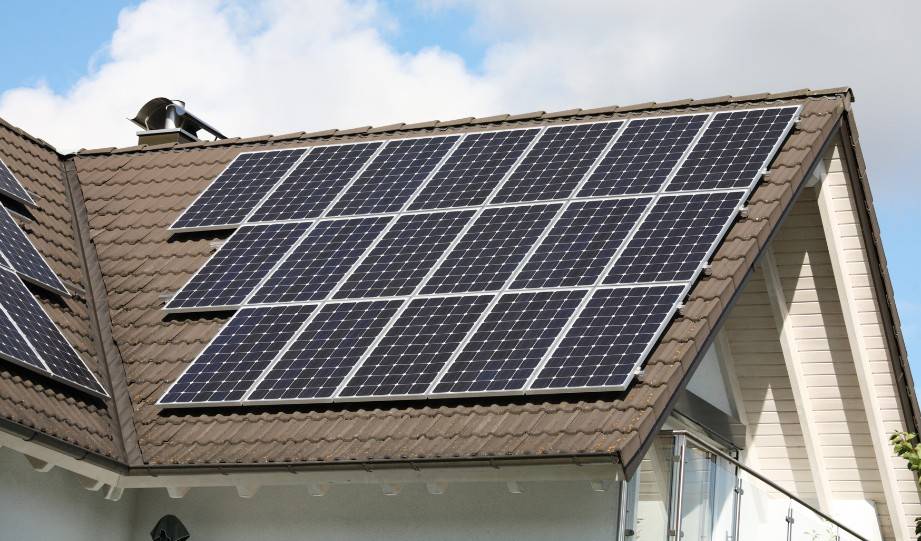


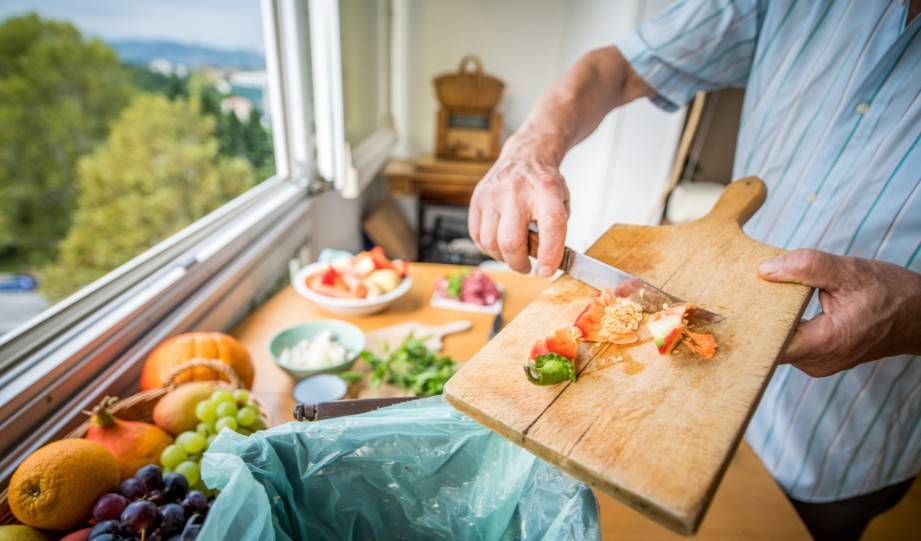

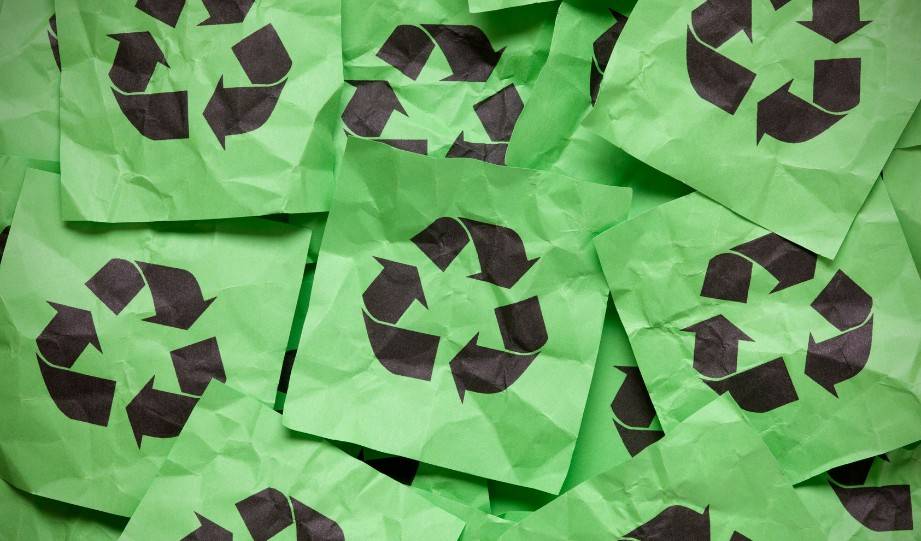


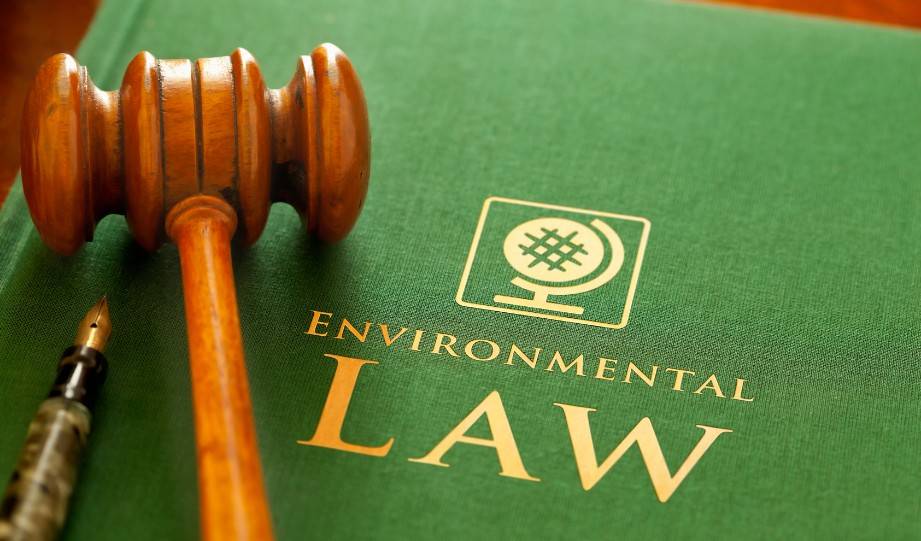
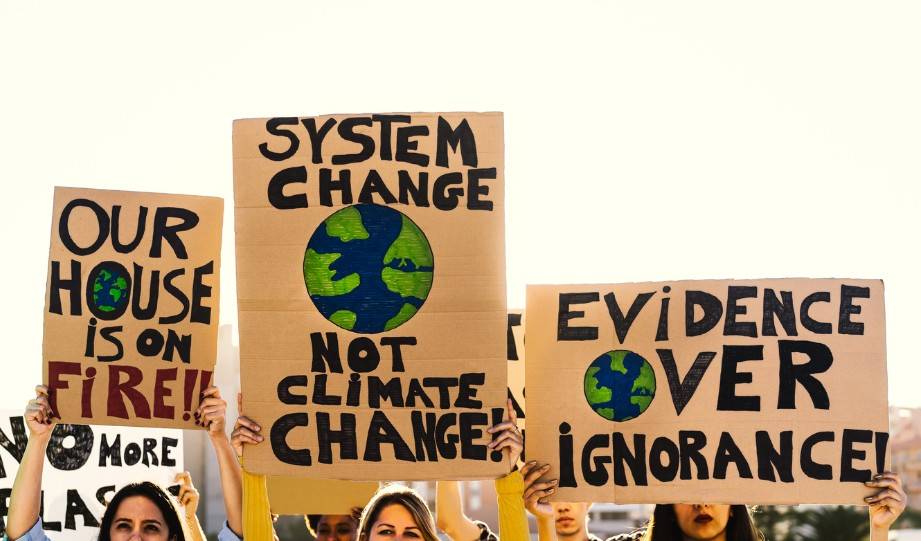



Nice blog! I value you’re providing this knowledge regarding sustainability. You’ve mentioned government incentives to switch to solar. Just want to add this in case someone doesn’t know this: for systems installed through the end of 2022, homeowners can claim 26% of qualifying installation costs as a tax credit. In 2023, the credit will be reduced to only 22% of qualifying installation costs.
Pingback: ECOS Laundry Detergent Review (2022): Read BEFORE You Buy
I like how you mentioned checking water leaks to help reduce water use. Over the past week, I have noticed our energy bill is starting to go up and I want to save more on water. I’ll be sure to remember these tips so we can conserve water and reduce our footprint.
Thank you for making us aware of the importance of our choices in our environmental impact.
We can therefore act well beyond carbon reduction by offsetting the remaining emissions through a reforestation program.
There are plenty of existing programs that do this.
I like to think that reforestation is more than just carbon offsetting, it is also about educating people, improving the local social and ecological environment and sometimes improving employment.
This kind of positive impact is unfortunately difficult to calculate.